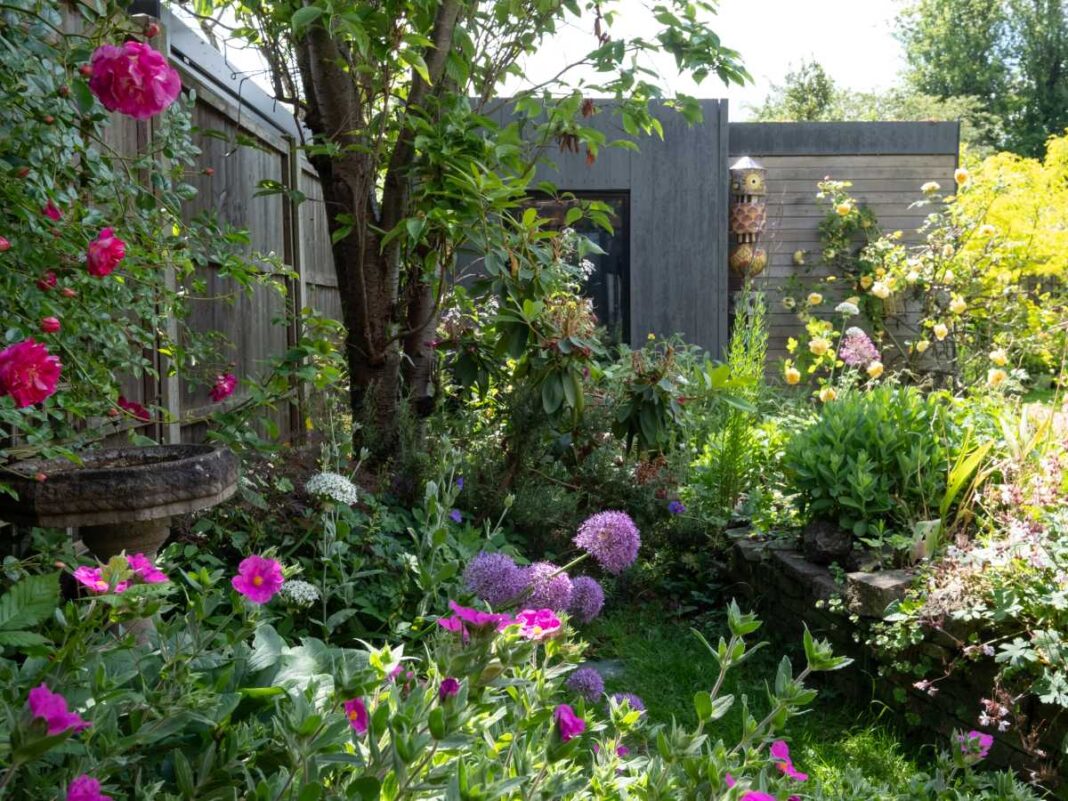There’s a profound joy in watching bees buzz from flower to flower, birds chirping from branches, and butterflies fluttering through your garden. Not only do these creatures bring life and beauty to our outdoor spaces, but they also play crucial roles in pollination and maintaining ecological balance. Creating a wildlife-friendly garden is a rewarding endeavor that supports biodiversity and connects us with nature.
Why Garden for Wildlife?
Our gardens can become sanctuaries for wildlife, especially as natural habitats face increasing pressures. By incorporating native plants and thoughtful design, we can create wildlife-friendly gardens that provide essential resources for bees, birds, butterflies, and other creatures.
Planning Your Wildlife Garden
Before digging in, it’s essential to plan carefully:
- Assess Your Space – Consider the sunlight, soil type, and size of your garden. Careful planning, including assessment of sunlight and soil type, is essential for a successful wildlife garden.
- Choose Native Plants – Emphasizing at least 70% native plants significantly benefits local wildlife, as they are used to the local environment and provide food and shelter for native species.
Providing Food Sources
Food is a primary need for wildlife:
- Nectar-Bearing Flowers – Bees and butterflies are attracted to flowers rich in nectar. Planting a variety of these flowers ensures they have food throughout the growing season. According to the Green in Real Life blog, “Nectar-bearing flowers are ideal for bees and butterflies.”
- Seed and Berry-Producing Plants – Birds are drawn to plants that produce seeds, berries, and fruits. However, they may also visit your edible garden. Maintaining hygiene for bird feeders is essential to prevent the spread of disease.
Providing Water Sources
Access to clean water is vital for wildlife:
- Bird Baths and Water Features: Birds benefit from bird baths, fountains, or water agitators. In colder climates, heated bird baths can provide water throughout the winter.
- Butterfly Puddling Areas: Butterflies enjoy shallow water sources where they can “puddle” and obtain nutrients.
Creating Shelter and Places to Raise Young
Wildlife always require safe spots to hide from their predators and raise their offspring:
- Layered Plantings – Adding height and layers in the garden provides habitats for birds, enhancing safety from predators. Options like birdhouses, nesting boxes, and insect hotels can improve the garden’s wildlife appeal.
- Brush Shelters – Incorporating dense brush shelters provides secure, low-ground habitats for various species like salamanders and small mammals.
Adopting Sustainable Gardening Practices
A wildlife-friendly garden is also an eco-friendly one:
- Avoid Pesticides – Reducing or eliminating pesticide use is crucial, as chemicals like neonics are linked to bee colony collapse. The Green in Real Life blog advocates for reducing pesticide use to protect pollinators.
- Composting and Mulching – Preparing soil through composting and adding mulch helps plants thrive and retain moisture.
- Use Native Plants – Native plants support more wildlife species. The National Wildlife Federation provides a Native Plant Finder to help gardeners select appropriate species for their region.
Seasonal Considerations
Catering to wildlife year-round ensures continuous support:
- Winter Resources – Leaving fruits, seeds, or leaf litter during autumn can support birds in colder months.
- Staggered Bloom Times – Plant perennials that bloom at various times to provide continuous food sources.
Overcoming Challenges
Gardening for wildlife comes with its own set of challenges:
- Dealing with Pests – Wildlife-friendly gardens may attract unwanted guests. For instance, birds may disturb mulch or raid plants. Implementing solutions like netting or accepting moderate sharing of garden yields can help.
- Managing Bee Stings – Bee stings are rare but manageable. Education and awareness can mitigate fears.
- Addressing Caterpillar Infestations – While butterflies are welcome, their caterpillars may feed on plants. Balancing caterpillar host plants and garden aesthetics is necessary.
Getting Certified
To recognize your efforts and inspire others, consider certifying your garden. The National Wildlife Federation’s Certified Wildlife Habitat program acknowledges gardens that provide essential elements for wildlife survival and reproduction.
Embrace the Journey
Creating a wildlife-friendly garden is a journey of learning and connection. It’s about fostering a sustainable and chemical-free environment where nature thrives alongside us. Gardeners can enjoy nature while mitigating pest issues and coexisting with wildlife.

